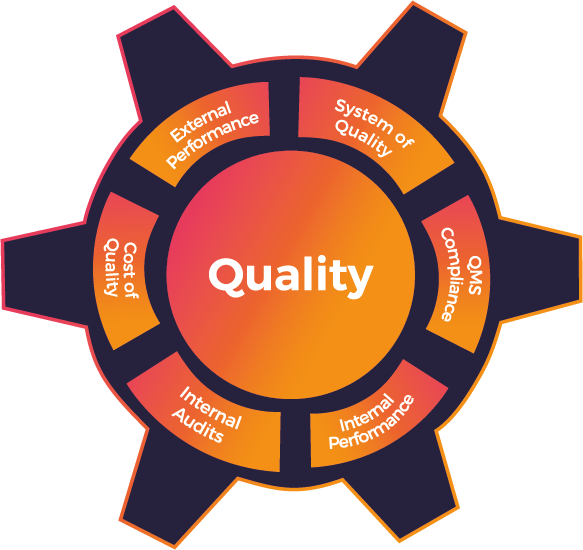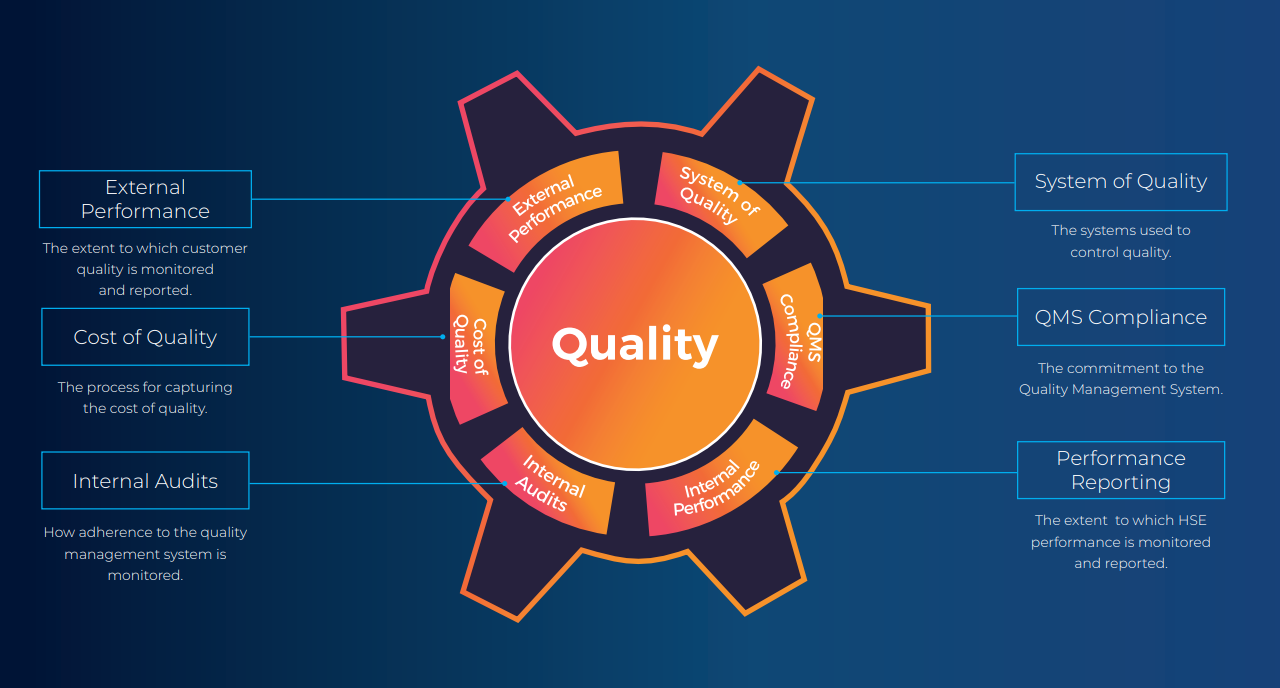3. Quality Management System (QMS) Compliance
How responsibility for QMS compliance is reinforced throughout the organisation.
QMS is a formalised collection of business processes focused on consistently meeting customer requirements
and enhancing their satisfaction. It is composed of an organisational structure, policies, procedures, processes and
resources for quality management. The responsibility for QMS compliance starts at the top of the organisation
with its leaders and is delegated and monitored via job roles and responsibilities.



